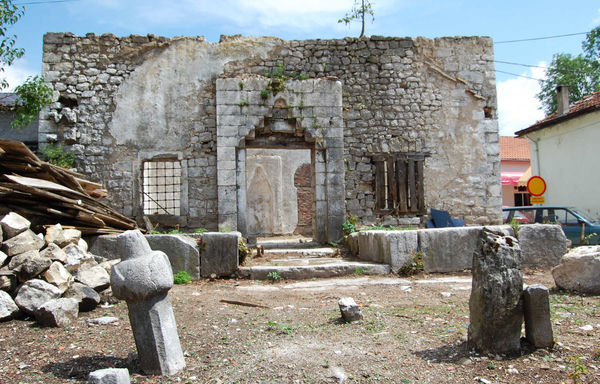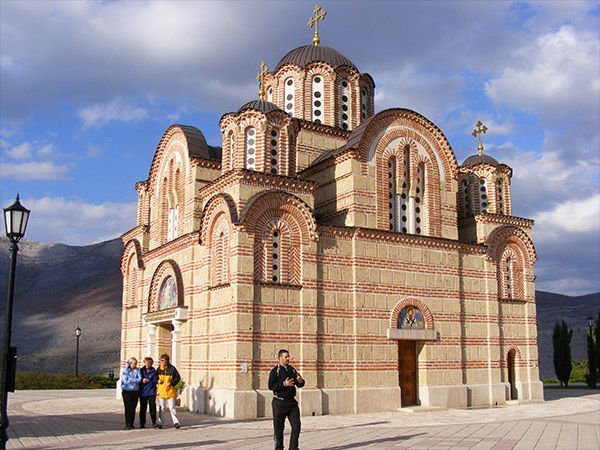Buffalo Nickels and Forgotten Mosques in Bosnia-Herzegovina
By Rick Steves

These days Croatia's Dalmatian Coast is inundated with tourists — and understandably so. But after a visit to Dubrovnik, the "Pearl of the Adriatic," I'm in the mood for a good Balkan adventure and decide to drive directly inland…to Bosnia-Herzegovina.
While most of Europe is doing away with border formalities, just the opposite seems to be the case in this part of Europe — a new set of borders pop up each year. The border station between Croatia and Bosnia-Herzegovina feels like the bleak frontier post between two nations that less than three decades ago were at war. It also feels like the gateway to the perfect antidote to Dubrovnik's tourist crowds.
Bosnia-Herzegovina's three main groups — Serbs, Croats, and Bosniaks — come from virtually identical ethnic stock. They just have different religions: Orthodox Christian, Catholic Christian, and Muslim, respectively. A typical tourist cannot determine the religion or loyalties of the people just by looking at them. Studying the complex demographics of the former Yugoslavia, you gain a respect for the communist-era dictator Tito — the one man who could hold this place together peacefully. And you understand why it fell apart when he died.
Bosnia-Herzegovina is one nation, historically divided into two regions: Bosnia and Herzegovina. But the 1995 Dayton Peace Accords gerrymandered the country along other lines, granting a degree of autonomy to the area where Orthodox Serbs predominate. This "Republika Srpska" rings the core of mostly Muslim Bosnia on three sides. When asked for driving tips, Croats — who, because of lingering bad feelings about the Serbs, avoid this territory — insist that the road I want to take doesn't even exist. From the main Croatian coastal road just south of Dubrovnik, directional signs send you to the tiny Croatian border town…but ignore the large Serb city of Trebinje just beyond.
And yet, Trebinje not only exists…it's bustling and prosperous. As I enter the town, police with ping-pong paddle stop signs pull me over — apparently, you must drive with your headlights on at all hours here. The "dumb tourist" routine gets me off the hook. I enjoy a vibrant market scene, and get cash at an ATM to buy some produce. (Even here — one of the most remote places I've been in Europe — ATMs are plentiful.)
Bosnia-Herzegovina's money is called the "convertible mark." I don't know if they are just thrilled that their money is now changeable with other currencies…but I remember a time when it wasn't. I stow a few Bosnian coins as souvenirs. They have the charm of Indian pennies and buffalo nickels. Some local bills have Cyrillic lettering and Serb historical figures, while others use "our" alphabet and show Muslims or Croats. Like everything else in Bosnia-Herzegovina, the currency is a careful balancing act.
Later, after a two-hour drive on deserted roads through a rugged landscape, I arrive at the humble crossroads village of Nevesinje. Towns in this region all have a "café row," and Nevesinje is no exception. It's lunchtime, but as I walk through the town, I don't see a soul with any food on their plate — just drinks. Apparently locals eat (economically) at home…and then enjoy an affordable coffee or drink at a café.
I realize that I won't find a real restaurant here. But a cluttered little grocery — the woman behind the counter happy to make a sandwich — is my solution for a quick meal. The salami looks like Spam. Going through the sanitary motions before slicing it, she lays down a piece of paper to catch the meat — but the slices of Spam land on the grotty base of the slicer as they are cut. I take my sandwich to an adjacent café and pay the equivalent of a US quarter for a cup of strong Turkish (or "Bosnian") coffee, with highly caffeinated mud in the bottom…then munch, drink, and watch the street scene.
Looking at the curiously overgrown ruined building across the street, I see bricked-up, pointed Islamic arches, and realize it was once a mosque. In its backyard — a no man's land of bombed-out concrete and glass — a single half-knocked-over, turban-topped tombstone still manages to stand. The prayer niche inside, where no one prays anymore, faces my desolate restaurant.
Big men drive by in little beaters. High-school kids crowd around the window of the local photography shop, which has just posted their class graduation photos. The girls on this cruising drag prove you don't need money to have style. Through a shop window, I see a newly engaged couple picking out a simple ring. One moment I see Nevesinje as very different from my hometown…but the next, it seems just the same.

